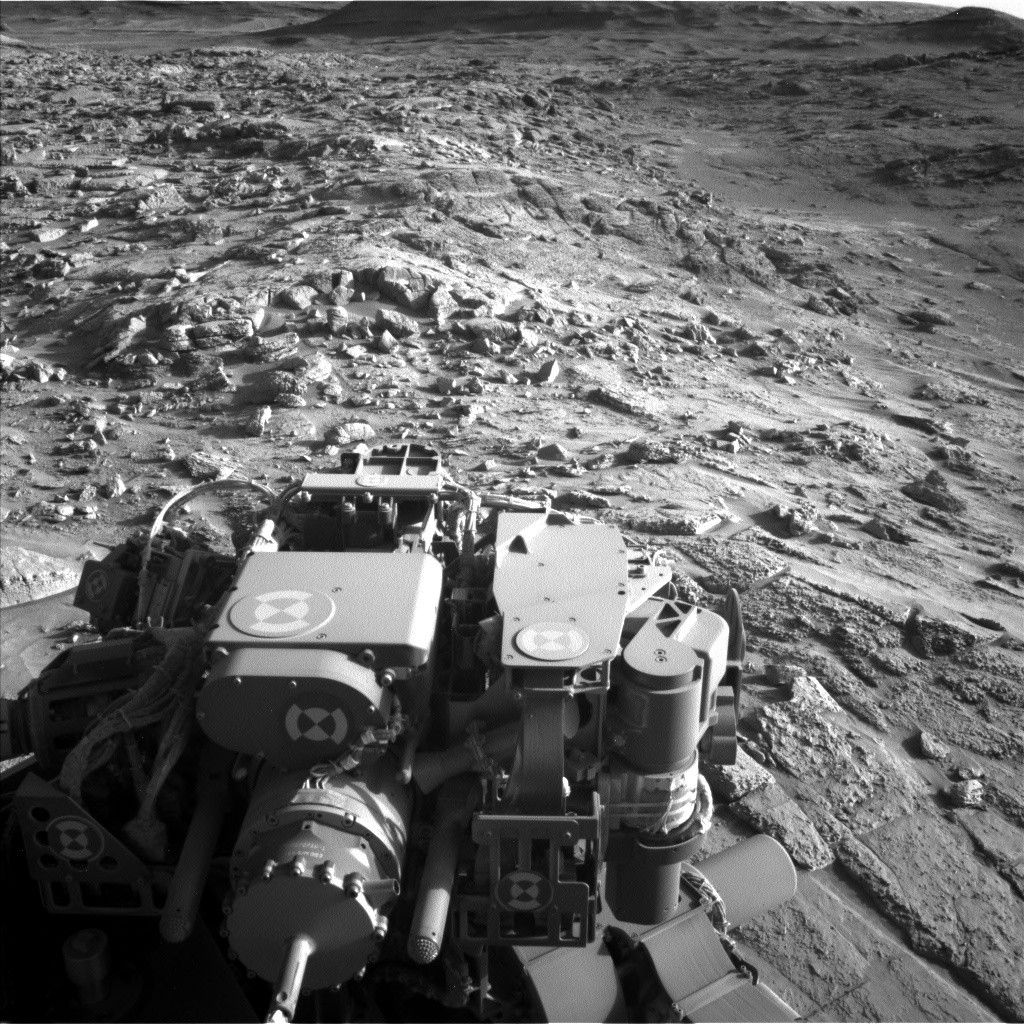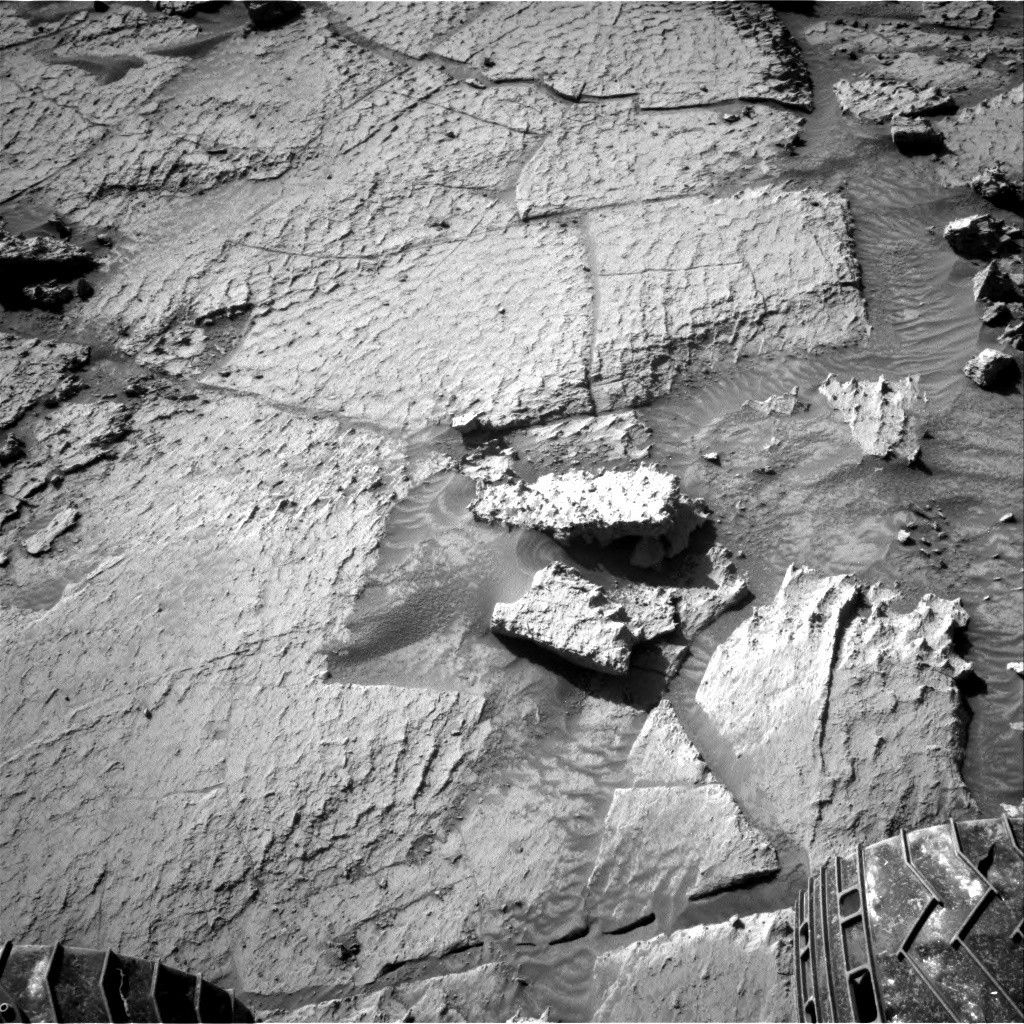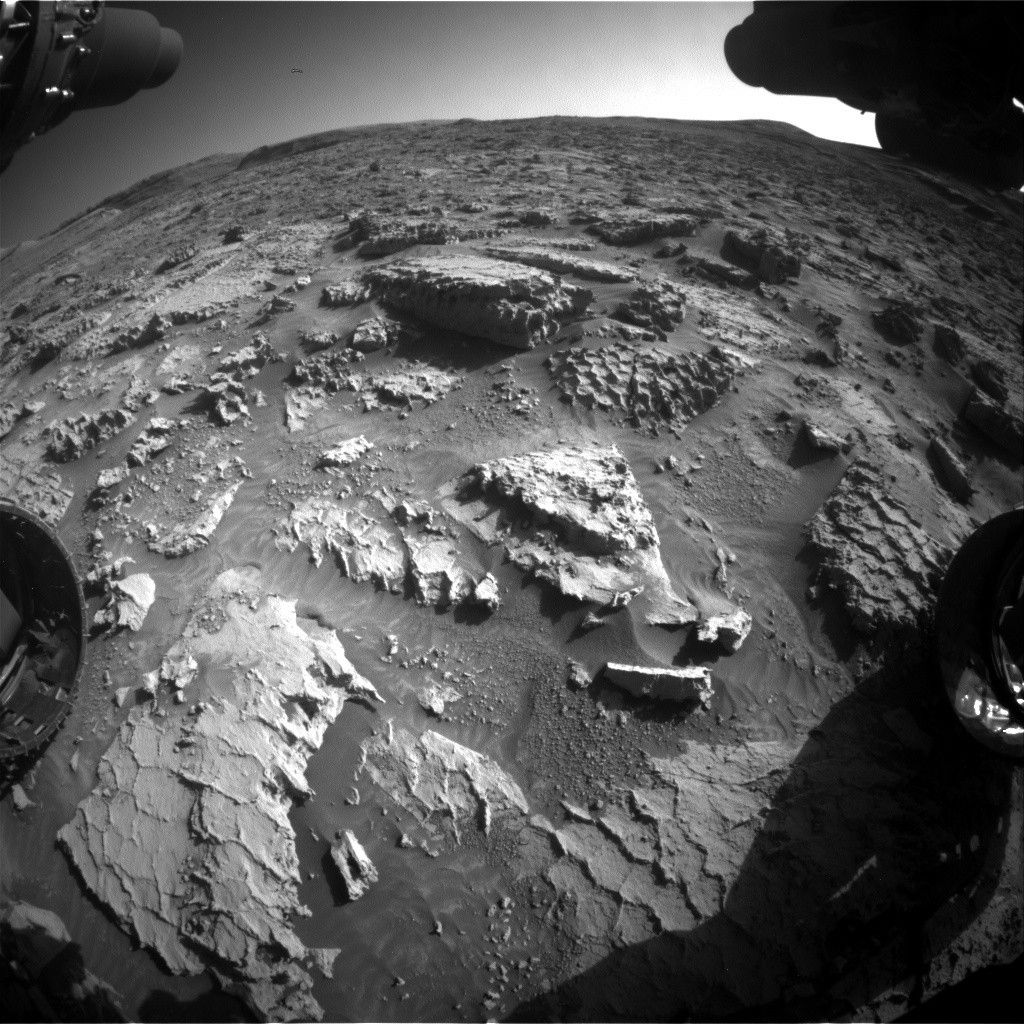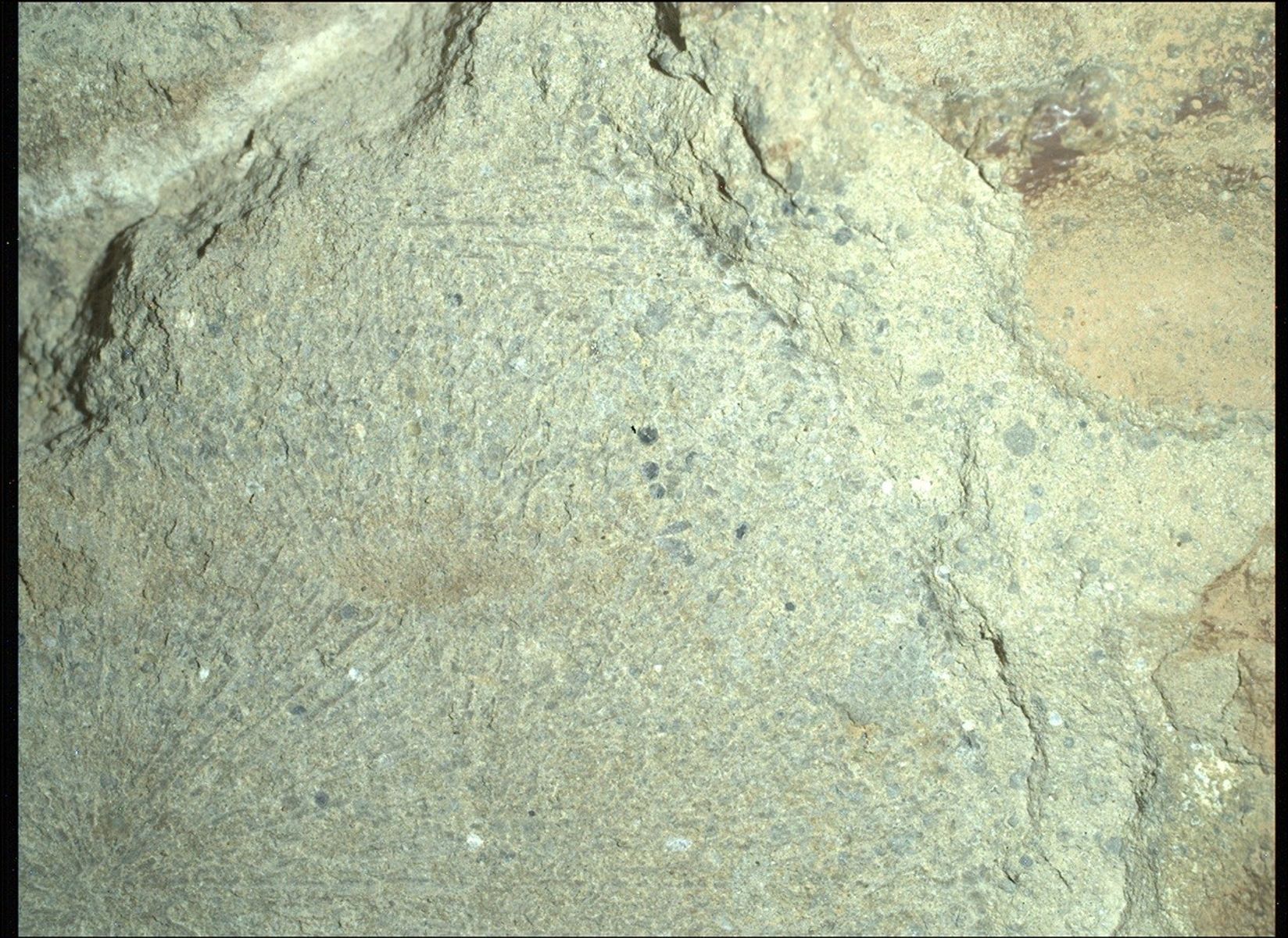- Curiosity Home
- Science
- News and Features
- Multimedia
- Mars Missions
- Mars Home
2 min read

Written by Lucy Lim, Planetary Scientist at NASA's Goddard Space Flight Center
Earth planning date: Wednesday, May 7, 2025
The drive from the Monday plan brought Curiosity up next to a geomorphic contact visible in the orbital data (from Mars Reconnaissance Orbiter's HiRISE imager). To the east of the contact are the layered sulfates that Curiosity has been driving through ever since climbing out of the Gediz Vallis channel, with a relatively rough surface texture; to the west this rougher texture gives way to a smoother-appearing surface cross-cut at a large scale with the rectilinear "boxwork" features. We are looking forward to seeing what this change looks like from a rover's-eye view in the drives to come!
For today's science plan, the contact is not quite in reach of most of the rover's instruments, so in the workspace we are focusing on collecting our last observations of the previous unit of layered sulfates. As we saw in the Sol 4532 workspace, many nearby blocks are honeycombed with polygonal fractures. However, this time the geochemical measurements from the APXS and ChemCam LIBS were co-targeted on a smooth brushable target, "Chumash," which will also be documented in high-resolution imaging by MAHLI. The DRT brush will ensure that measurements of lighter elements such as sodium and magnesium by APXS are representative of the underlying bedrock, rather than the dusty layer on top. The brush will also give MAHLI a better view of the block and a chance to characterize the grain size of these sedimentary rocks.
The long-distance ChemCam remote-imaging mosaic in this plan is targeting a scour feature on the Texoli butte behind us, likely representing ancient wind events that took place near the time these layers were being deposited.
The sulfate/boxwork unit contact ahead of us will be imaged in a stereo mosaic by Mastcam. Smaller mosaics will cover some of the polygonal "honeycomb" features in nearby bedrock blocks and troughs in the regolith.
After making all these observations, the rover will drive across the contact. The second, post-drive sol will include several untargeted and automatically targeted observations. The AEGIS algorithm will provide a LIBS geochemical observation by ChemCam and the modern Martian environment will be monitored with camera measurements of cloud altitudes and atmospheric opacity, as well as the usual passive sensing from REMS and DAN.









